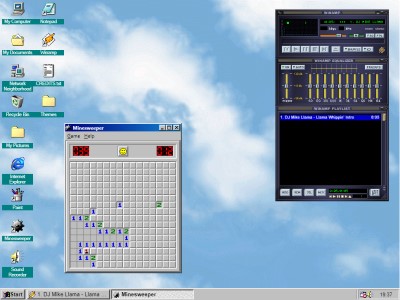Windows 98
Rating: 4.43 from 5 (based on 274 votes. 👍 230 – users like it, 👎 38 – disliked, 💬 6 – comments posted)
Released: November 2020
Windows 98, a pioneering hybrid 16/32-bit graphical operating system, was officially launched by Microsoft on June 25, 1998.
The Journey from Memphis to Windows 98 In June 1997, Microsoft unveiled its initial public version of what was a culmination of two years' Windows 95 development, termed “Microsoft Memphis”. Not long after, this project was baptized with its official title, Windows 98.
Historical Timeline The US saw the formal debut of Windows 98 on June 25, 1998, marking two years and ten months post its predecessor's launch. This release came on the heels of an intensive year of beta testing.
Distinguishing Features of Windows 98
-
Legacy Updates: Windows 98 integrated all prior updates from Windows 95, including Service Pack 1 and OSR 2.
-
Enhanced Compatibility: The OS introduced compatibility for Universal Serial Bus (USB), Internet Explorer 4, and introduced myriad new functionalities.
-
Interface & Efficiency: A refined system interface, enhanced memory optimization, and better power management made Windows 98 stand apart from Windows 95.
-
Plug-and-Play & New Standards: Windows 98 expanded Plug-and-Play capabilities, supporting the AGP bus, FireWire interface (IEEE 1394), and IrDA infrared ports. The operating system also adopted the ACPI (Advanced Configuration and Power Interface) standard.
-
FAT32 File System: To cater to hard drives exceeding 2 GB, Windows 98 employed the FAT32 file system, an evolution from the 16-bit FAT. FAT32 supports up to 2 TB hard drives.
-
Advanced Driver & Networking: The introduction of the WDM (Win32 Driver Model) and support for virtual private networking (VPN) were notable additions.
-
Multimedia & Devices: With DirectX 6 integrated, Windows 98 also supported TWAIN-compatible devices like digital cameras and scanners.
System Requirements for Windows 98
-
Processor: Minimum 486DX 66 MHz (Pentium recommended).
-
Memory: 16 MB RAM (24 MB recommended).
-
Storage: Free disk space varies based on the type of installation and hard drive format (FAT16 or FAT32). Typically, a Windows 95 OS upgrade demands 195 MB, while full installations on FAT16 and FAT32 require approximately 225 MB and 175 MB, respectively.
-
Drive: A 3.5-inch high-density floppy disk reader.
-
Display: VGA or higher monitor (SVGA with 16-bit or 24-bit color support is optimal).

kittytoe
- 02-03-2021 14:29:07